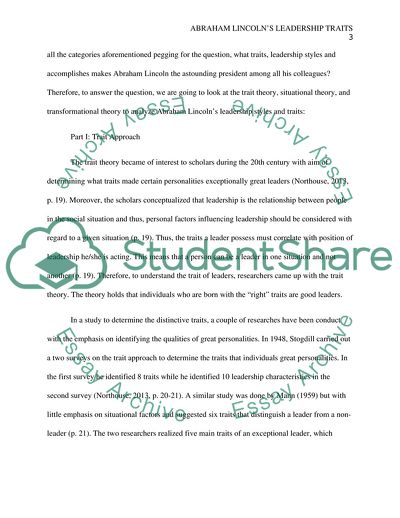Cite this document
(Abraham Lincoln as a Trait, Situational, and Transformational Leader Essay Example | Topics and Well Written Essays - 2250 words, n.d.)
Abraham Lincoln as a Trait, Situational, and Transformational Leader Essay Example | Topics and Well Written Essays - 2250 words. https://studentshare.org/history/1844216-abraham-lincoln-as-a-traitsituational-and-transformational-leader
Abraham Lincoln as a Trait, Situational, and Transformational Leader Essay Example | Topics and Well Written Essays - 2250 words. https://studentshare.org/history/1844216-abraham-lincoln-as-a-traitsituational-and-transformational-leader
(Abraham Lincoln As a Trait, Situational, and Transformational Leader Essay Example | Topics and Well Written Essays - 2250 Words)
Abraham Lincoln As a Trait, Situational, and Transformational Leader Essay Example | Topics and Well Written Essays - 2250 Words. https://studentshare.org/history/1844216-abraham-lincoln-as-a-traitsituational-and-transformational-leader.
Abraham Lincoln As a Trait, Situational, and Transformational Leader Essay Example | Topics and Well Written Essays - 2250 Words. https://studentshare.org/history/1844216-abraham-lincoln-as-a-traitsituational-and-transformational-leader.
“Abraham Lincoln As a Trait, Situational, and Transformational Leader Essay Example | Topics and Well Written Essays - 2250 Words”. https://studentshare.org/history/1844216-abraham-lincoln-as-a-traitsituational-and-transformational-leader.


